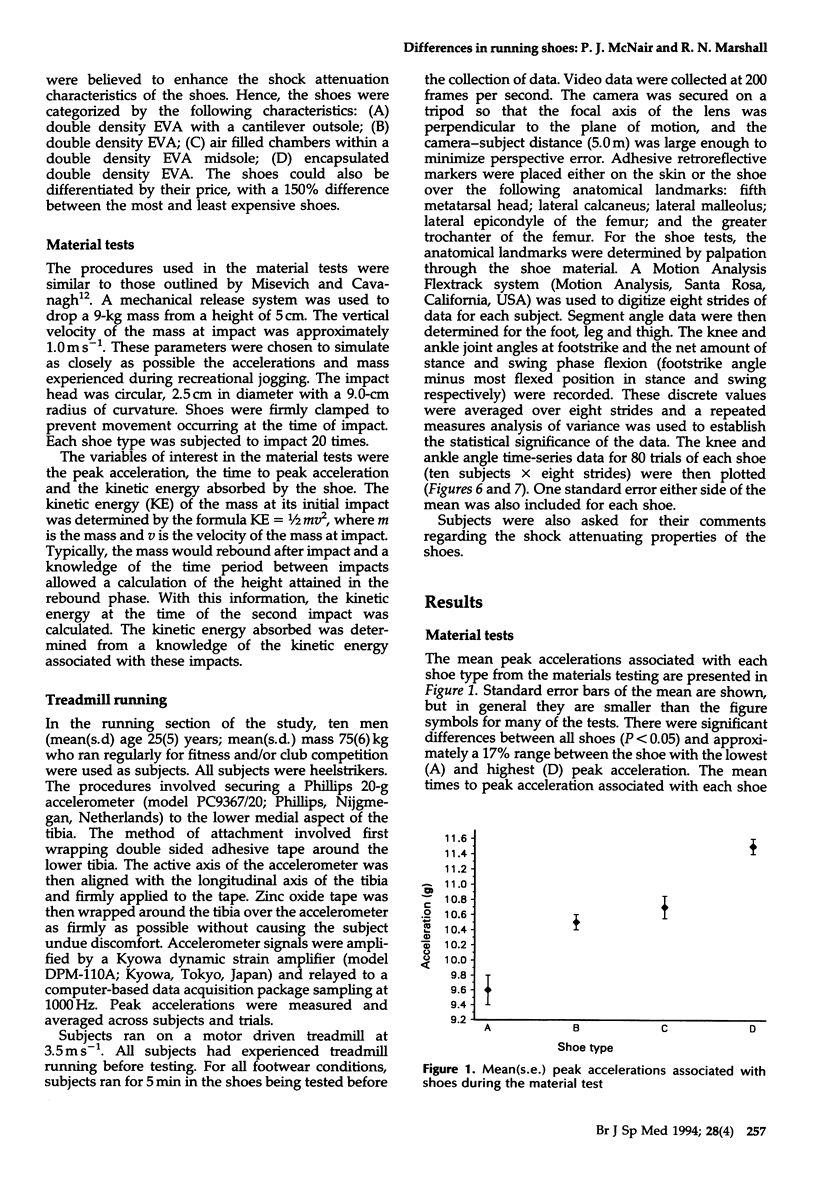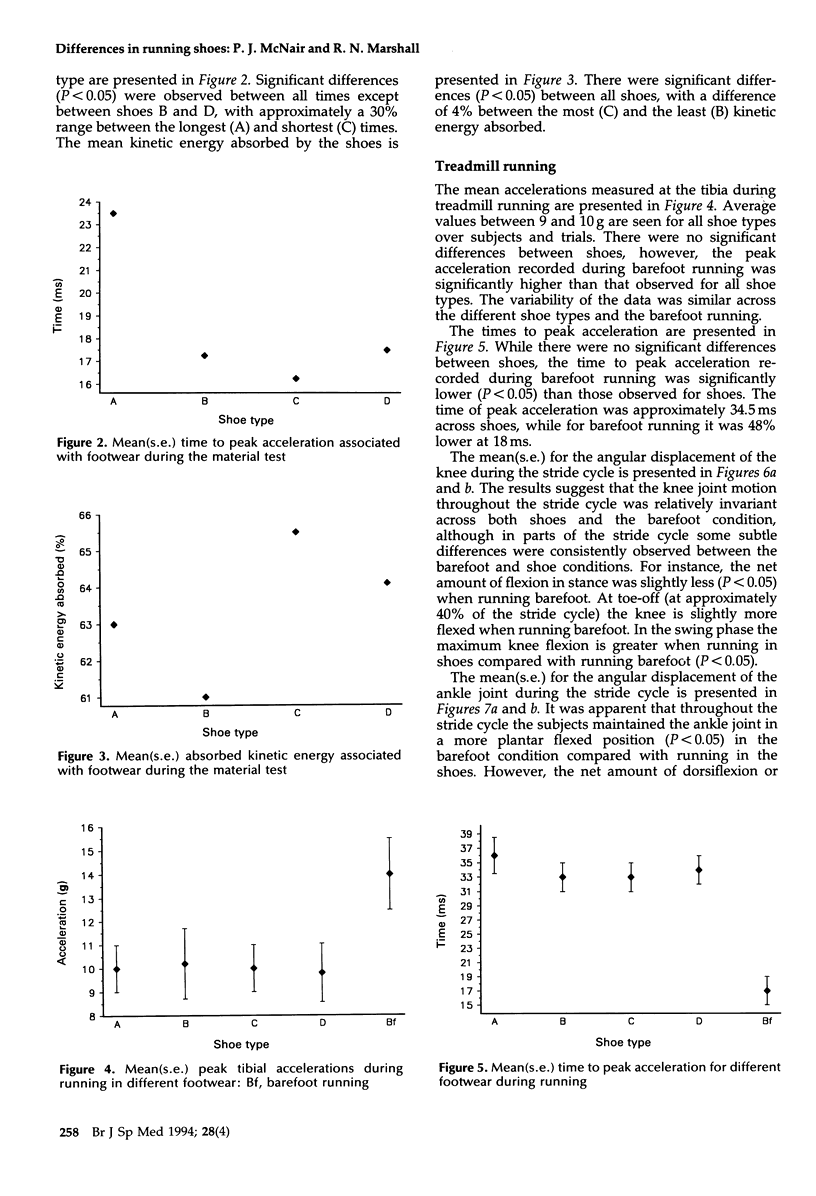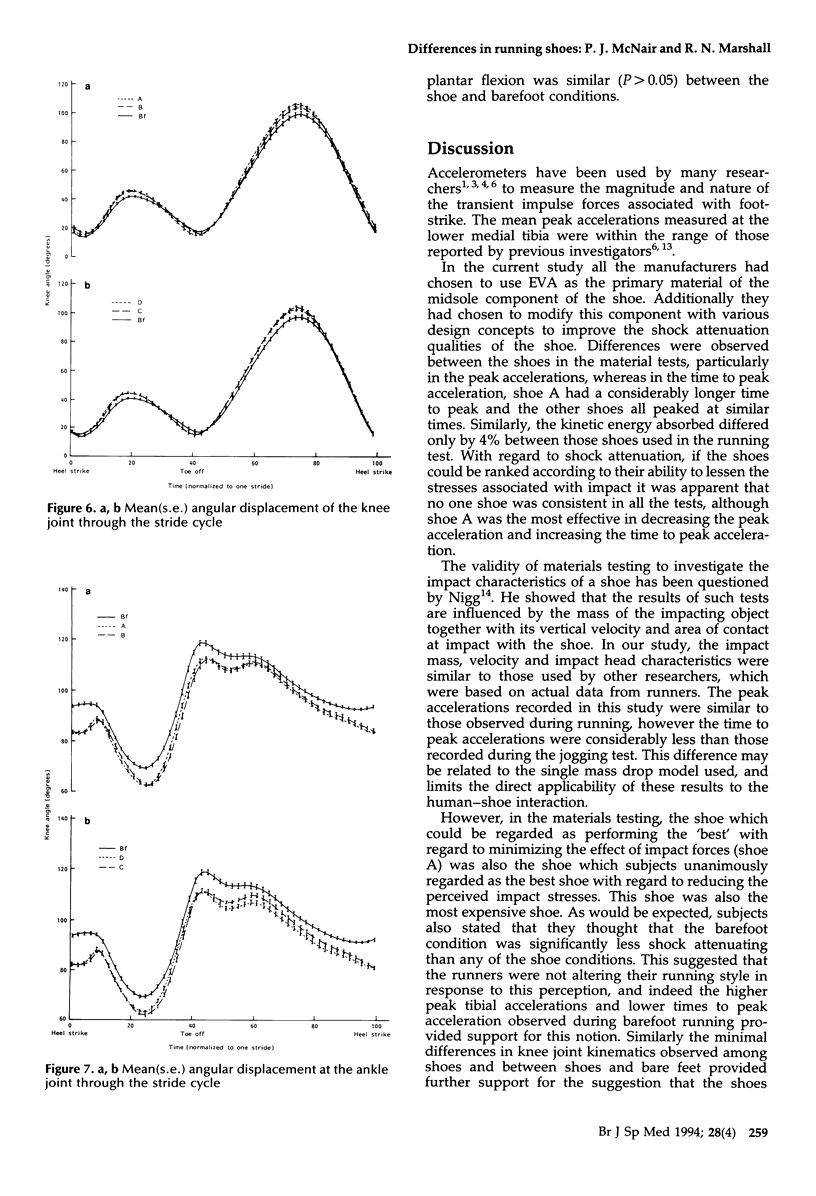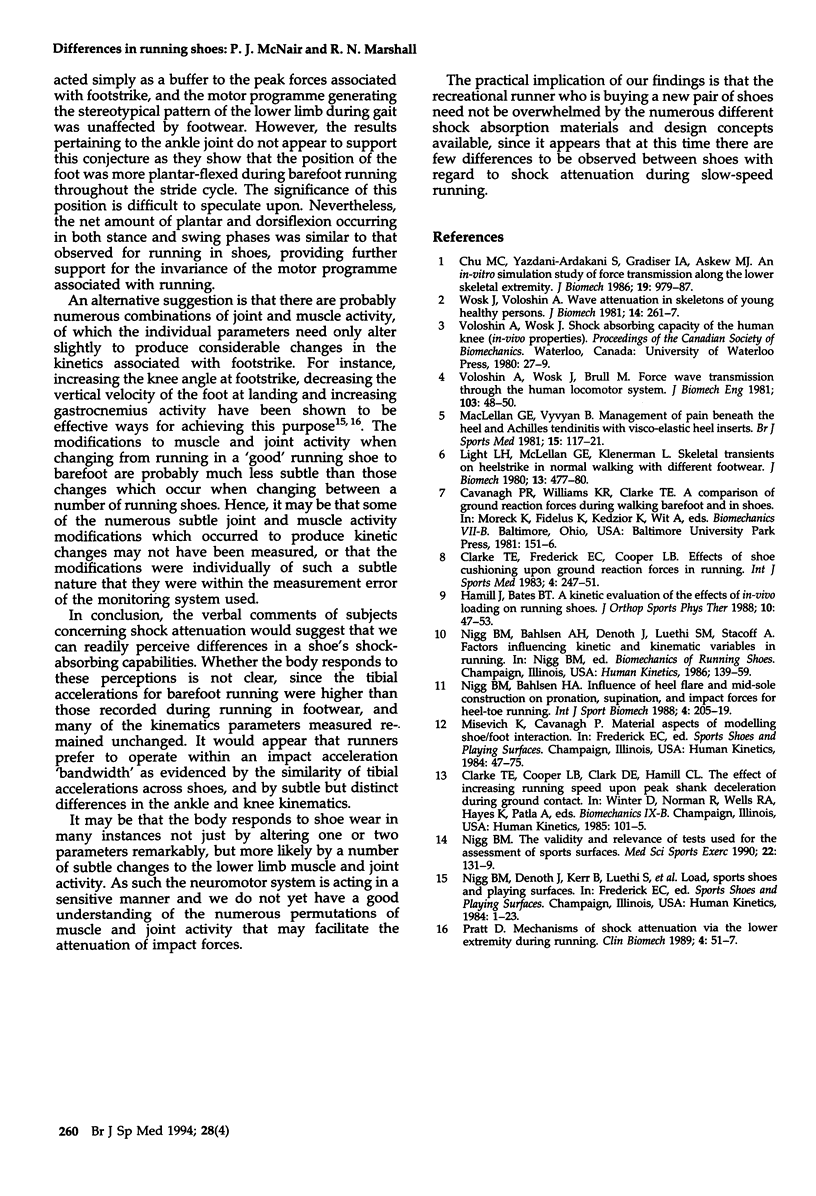Abstract
The characteristics of the midsole were examined in four pairs of running shoes by a materials test. The variables of interest were the peak acceleration, time to peak acceleration and the kinetic energy absorbed. Ten subjects then ran at a recreational jogging pace (3.5 ms-1) barefoot and in the shoes. An accelerometer secured to the lower tibia was used to measure the peak acceleration and time to peak acceleration associated with footstrike. Subjects were also videoed and a kinematic analysis was undertaken at the knee and ankle joints. The results from the materials test showed that the shoes differed in their midsole characteristics, however, no significant differences (P > 0.05) were observed in the peak acceleration and time to peak acceleration during running in shoes. These variables were significantly greater in the barefoot running condition (P < 0.05), as compared with running in shoes. Small and subtle kinematic differences were observed between the barefoot and shoe conditions. It appears that the differences observed between the shoes in the materials test were not sufficient to elicit the kinematic changes observed between the barefoot and shoe conditions. It is suggested that runners operate within a 'kinetic bandwidth' when responding to impact stresses.
Full text
PDF




Selected References
These references are in PubMed. This may not be the complete list of references from this article.
- Chu M. L., Yazdani-Ardakani S., Gradisar I. A., Askew M. J. An in vitro simulation study of impulsive force transmission along the lower skeletal extremity. J Biomech. 1986;19(12):979–987. doi: 10.1016/0021-9290(86)90115-6. [DOI] [PubMed] [Google Scholar]
- Clarke T. E., Frederick E. C., Cooper L. B. Effects of shoe cushioning upon ground reaction forces in running. Int J Sports Med. 1983 Nov;4(4):247–251. doi: 10.1055/s-2008-1026043. [DOI] [PubMed] [Google Scholar]
- Light L. H., McLellan G. E., Klenerman L. Skeletal transients on heel strike in normal walking with different footwear. J Biomech. 1980;13(6):477–480. doi: 10.1016/0021-9290(80)90340-1. [DOI] [PubMed] [Google Scholar]
- MacLellan G. E., Vyvyan B. Management of pain beneath the heel and Achilles tendonitis with visco-elastic heel inserts. Br J Sports Med. 1981 Jun;15(2):117–121. doi: 10.1136/bjsm.15.2.117. [DOI] [PMC free article] [PubMed] [Google Scholar]
- Nigg B. M. The validity and relevance of tests used for the assessment of sports surfaces. Med Sci Sports Exerc. 1990 Feb;22(1):131–139. [PubMed] [Google Scholar]
- Voloshin A., Wosk J., Brull M. Force wave transmission through the human locomotor system. J Biomech Eng. 1981 Feb;103(1):48–50. doi: 10.1115/1.3138245. [DOI] [PubMed] [Google Scholar]
- Wosk J., Voloshin A. Wave attenuation in skeletons of young healthy persons. J Biomech. 1981;14(4):261–267. doi: 10.1016/0021-9290(81)90071-3. [DOI] [PubMed] [Google Scholar]


